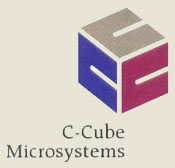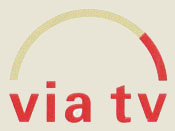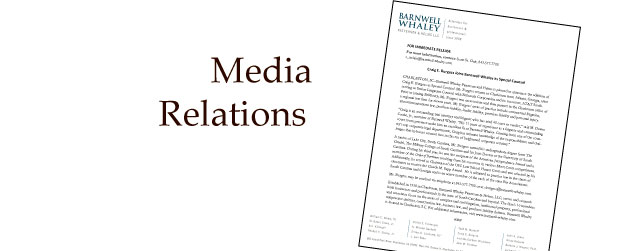I've done a tremendous amount of domestic and international media relations work, both in the business-to-business and the consumer spaces. My favorite campaigns were for C-Cube's digital video products and 8x8's ViaTV Videophone.
C-Cube Campaigns

When I joined C-Cube in 1992, digital video was going to revolutionize consumer electronics and broadcast television, and it has. C-Cube played a substantial role in that revolution, and I had the privilege of shaping and delivering that message. Here are brief descriptions of my favorite campaigns (alas, I no longer have the clip books).
For all C-Cube campaigns, I wrote all the press materials (release, Q&A, presentation) and frequently presented to the press.
- CL450 MPEG1 Video Decoder: Lots of people know what MPEG is today. Very few did in 1992. The MPEG1 standard was created to allow video to be delivered on CDs (compact discs). The first application was intended to be the Philips CDi player (i = interactive), a game platform. The CL450 was the first single-chip video decoder and was developed primarily for Philips.
- Launch venue: Summer CES (Consumer Electronics Show) in Chicago followed by a press tour in Europe (I presented in Europe).
- Key result: Front page story in EE Times, plus features in most every US electronics magazine.
- VideoRISC Processor: Before digital video can be distributed, it must be encoded, an enormously compute intensive task. The VideoRISC Processor was the first device able to encode video in real time. It became the foundation of the DirecTV digital satellite service. This product won C-Cube an Emmy award.
- Launch venue: Press conference and press tour (US and Europe).
- Key result: Cover story in Electronic Design magazine.
- CL480 VideoCD Decoder: This chip was the first single chip MPEG1 audio and video decoder. VideoCD players became a huge hit in China, making C-Cube the largest supplier of digital video semiconductors in the world.
- Launch venue: Round the world press tour (I organized in concert with our distributors)
- Tokyo: Luncheon presentation
- Hong Kong: One-on-ones
- Munich: Luncheon presentation
- Paris: One-on-ones
- London: One-on-ones
- US: One-on-ones
- Key results: Feature coverage in EE Times, and many European and Asian trade press
8x8 Campaigns

I joined 8x8 primarily to launch their ViaTV Videophone. Unfortunately, I joined only six weeks before the scheduled launch at the Winter Consumer Electronics show. During that short time, I hired Technology Solutions Inc. (TSI) as our PR agency, named the product, organized a 20x20 booth (up from 10x10) for CES and got some collateral done.
Despite the rush (or perhaps because of it) it was an very successful launch.
- Launch Venue: Winter CES (Las Vegas) followed by an East Coast media and analyst tour
- Key results:
- Live demonstration (from Las Vegas to New York) on CBS This Morning
- Live demonstration (from Las Vegas to New York) on Today (NBC)
- Coverage on many local TV stations with Andy Pargh (the Gadget Guru)
- Feature coverage in Newsweek (technology product)
- Coverage in USA Today
- Coverage in Parade Magazine
- Coverage in many daily newspapers
Over the following year, we announced several new ViaTV models, including the inexpensive VC50 Modular Videophone and the sleek VC150 Desktop Videophone, which helped expand and maintain mind share. As a consequence, we achieved the following additional coverage over the course of the year:
- Launch Venues: Various
- Key Results:
- Featured on MTV's The Real World Seattle
- Featured on MTV's Loveline show
- Fox News
- Maxim Magazine
- Playboy Magazine
- Stuff Magazine
- Demonstrated on many local TV new shows with the Gadget Guy
Example Press Releases
Like any piece of writing, a press release must be tailored for its intended audience. While all are essentially news stories, a release about a technology product that is intended for a trade publication must include all of the technical details that an engineer would need to know to determine whether a product is relevant to his requirements. These same details would bore the feature editor of a general interest publication to tears. He wants to know how the product may impact his reader's life style.
A Q&A is also a useful document for both the press and general public. Because it breaks a topic down into bite sized chunks, Q&As are apparently more digestible than press releases.
I've written both styles of releases, unfortunately, my more consumer-oriented releases (C-Cube and ViaTV) died in a disk crash. Here are a few examples of the literally hundreds of more technical press releases I've written over the years.






